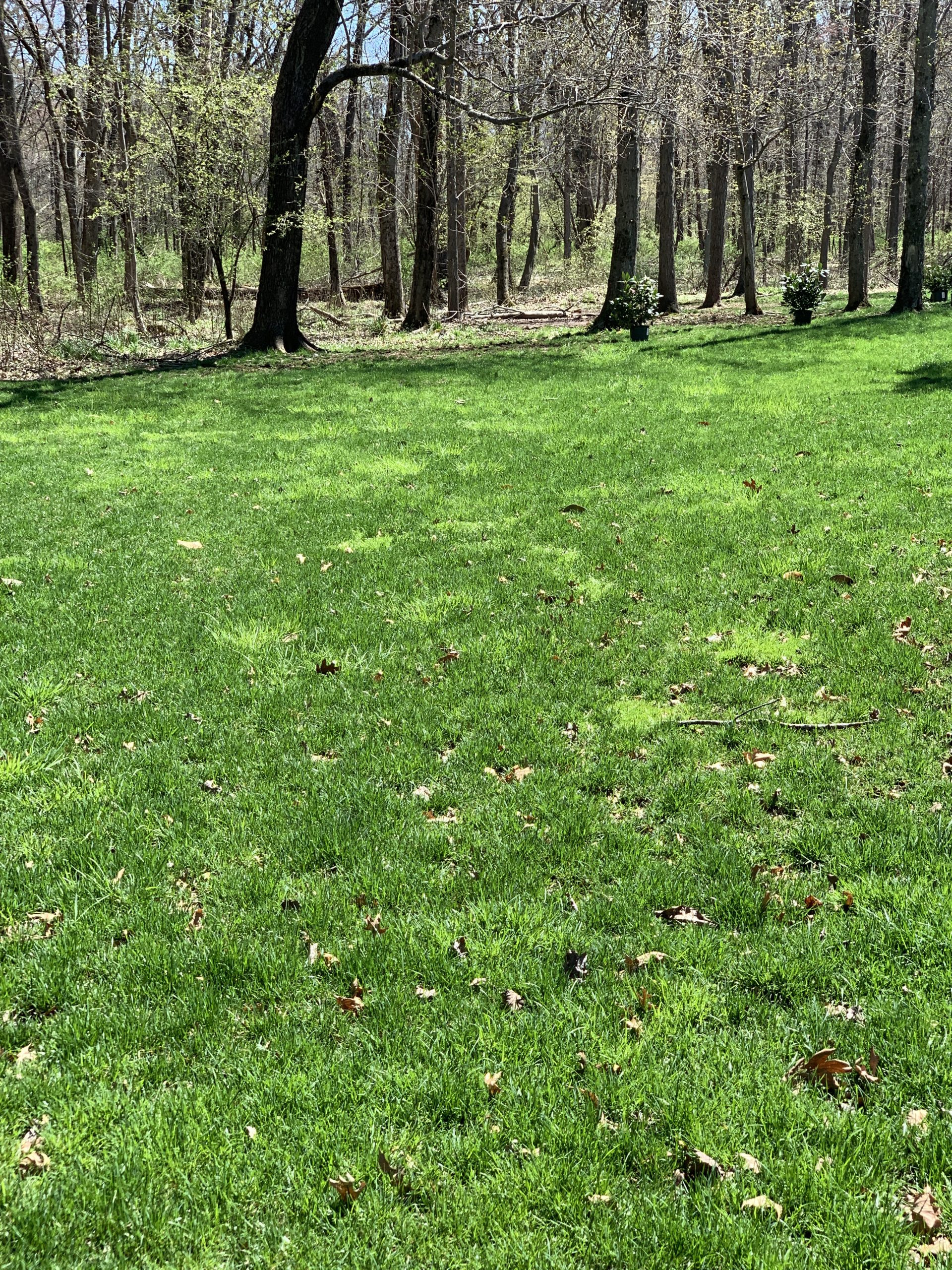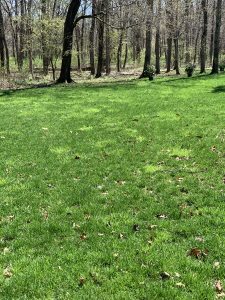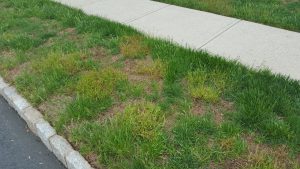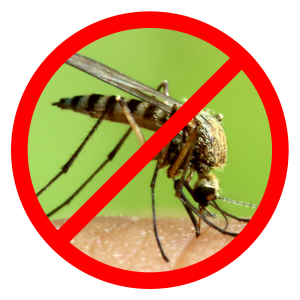Undesirable Turf Species

A weed is defined as a plant growing where it is not desired; this includes different turf varieties that are undesirable to a maintained lawn. Unfortunately, these “grassy weeds” are extremely difficult to control because most lawn care treatments can’t effectively target just one species of grass. In this blog we are going to discuss two of the more common grassy weeds in our area of New Jersey.
Poa Trivialis and Creeping Bentgrass
Poa Trivialis, commonly known as Roughstalk bluegrass, and Creeping Bentgrass are two problem grass species that are very common in New Jersey. Both species are shallow rooted and spread through stolons along the surface of the soil. When conditions are ideal, they can start to crowd out desirable turf species and take over parts of your lawn in large patches.
Why is this plant an issue? One reason this grass type is undesirable is because poa trivialis is not tolerant of high heat and drought conditions. In New Jersey, these turf varieties will start to go dormant and struggle in the summer, potentially leaving large sections of your lawn looking brown until the weather cools down in the fall.
This grassy weed would be less of a problem if the summer heat killed the plant, then we could reseed with a better grass variety and our problem would be solved. Unfortunately, both species are extremely resilient and can continue to grow from stolons for many years.
When temperatures start to cool down, you will notice new growth developing, even in sections where the plants looked completely dead during summer. Once the plants recover from the summer heat, they will continue to spread and potentially take over larger areas of desirable turf. The more they spread, the harder they become to control.
- Notice the lighter green colored areas of grass; this is poa trivialis.
How did this plant get in my lawn?
Roughstalk bluegrass seed looks very similar to Kentucky bluegrass seed, so one of the ways it can get into your lawn is through contaminated seed. When purchasing seed for your lawn, make sure you get certified seed from a quality source. As previously mentioned, the plants are extremely resilient and if any stolons or seeds are present in the soil (your existing soil or soil purchased from a store), they can begin to grow and spread when the environmental conditions are right.
Favorable Conditions
What are the right conditions for these grass types? Both grass varieties prefer areas that are frequently watered and also do well in shaded regions of your lawn. In the past two years, our region has experienced higher than normal rainfall which made it ideal for these species to thrive.
Watering Practices
Although we can’t control the weather, we can control our irrigation settings. Even though it seems to be a very common practice, there are numerous reasons why you should not set your irrigation to turn on every day (or every other day) for 30 minutes per zone. If you are currently watering this way, you are improving your chances of getting disease in the summer and making the perfect environment for roughstalk bluegrass and creeping bentgrass to thrive in the spring and fall.
Set your sprinklers to water infrequently but for a longer period of time. This will allow the soil to dry and make the environment less ideal for these problem grass varieties. Depending on the layout of your property, a good starting point for irrigation is twice a week and 1 hour per zone, depending on the type of irrigation heads you have installed. To learn more about setting up your irrigation schedule, check out our blog.
Mowing Practices
Following proper mowing practices is important for the health of all turf varieties and can also help you deal with these problem grasses. We recommend leaving your grass at least 3” tall and never mowing off more than 1/3 of the plant at a time. Both of these problem grass varieties prefer lower mowing heights, closer to 2” is ideal. By leaving the grass taller, you’re creating an environment that promotes the health of desirable turf, making it more difficult for poa trivilias and creeping bentgrass to spread.
Reduce Soil Compaction
Finally, we recommend reducing soil compaction in areas where these plants are a problem. Roughstalk bluegrass does very well in compacted soils. For home lawns, we typically recommend core aerating every two years, however if you have areas where these grass varieties persist, you may want to aerate on an annual basis.
To summarize the cultural practices, you want to water infrequently but for a long time, keep your mowing height at least 3” tall, and reduce soil compaction by aerating. Even if you don’t have problems with grassy weeds, these are excellent cultural practices to follow for desirable turf species. If you’re following all these cultural practices and the problem continues to get worse, there are chemical control options.
- What the lawn looks like after core aeration.
Chemical Control
When cultural practices are not able to control these undesirable grass varieties, the most practical option is to apply a non-selective herbicide and kill those areas. Afterwards, those areas need to be reseeded in September. Even if the plants look like they are already dead from summer stress, it is important to still treat those sections with a non-selective herbicide.
These plants are resilient and can regrow from a small section of stolon above or below the surface, therefore treatment is a crucial step. Wait approximately two weeks after you treat the area and then seed with the right variety of grass for that area of your lawn. For our region of New Jersey, seeding results are best if you do the seeding sometime in late August through the entire month of September.
Importance of Good Drainage
If these plants are thriving in an area that typically stays wet for extended periods of time, be sure to address the drainage and grading issues with your landscaper before reseeding. These areas will continue to be a problem until the drainage issue is solved. Even if you follow the right cultural practices, use chemical control, and reseed, the constantly wet environmental conditions are ideal for these grass varieties and they will re-establish in those areas. First solve the drainage issues and then tackle the problem turf varieties.
Conclusion
If you choose to reseed your lawn, some of the unwanted grass varieties will somehow find their way back. It is very difficult to completely remove these species with 100% control without doing some type of very large and expensive renovation project. But with the right cultural practices, you won’t have to worry about the plants rapidly spreading and taking over. It’s also much easier to control them with a non-selective herbicide when they are in small numbers and just start to show up.
Grassy weeds are some of the most difficult plants to control in a home lawn. That being said, following proper cultural practices as described in this blog can make the environment extremely difficult for them to thrive. If you still have issues, chemical control and reseeding will help eliminate these undesirable turf species in the short term. Long term monitoring will be necessary to stop these unwanted plants from taking over again. If you live in our service area and have any questions, feel free to contact us at 908-281-7888.







